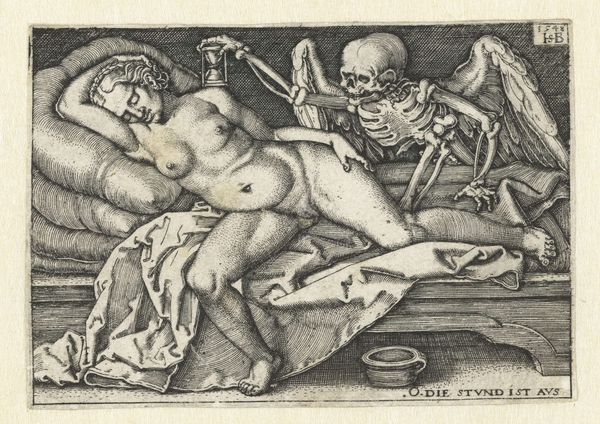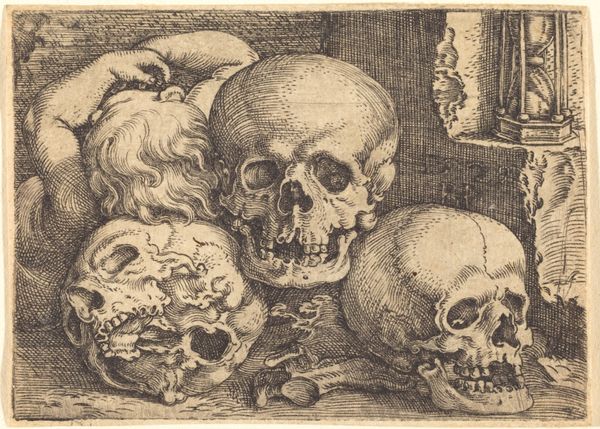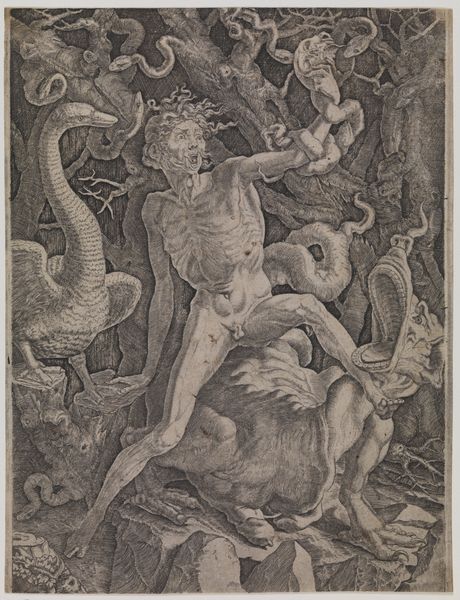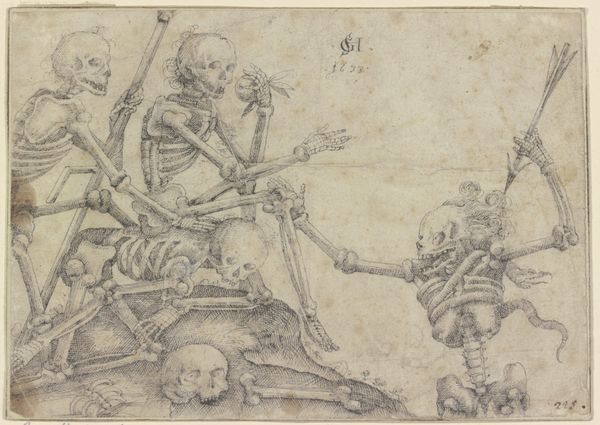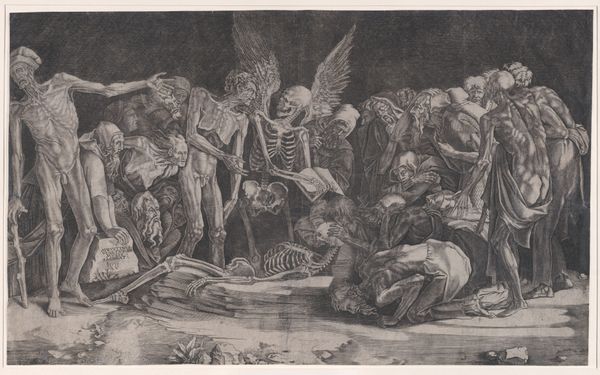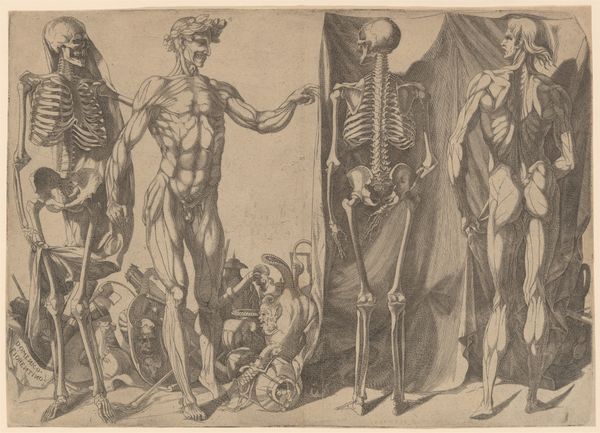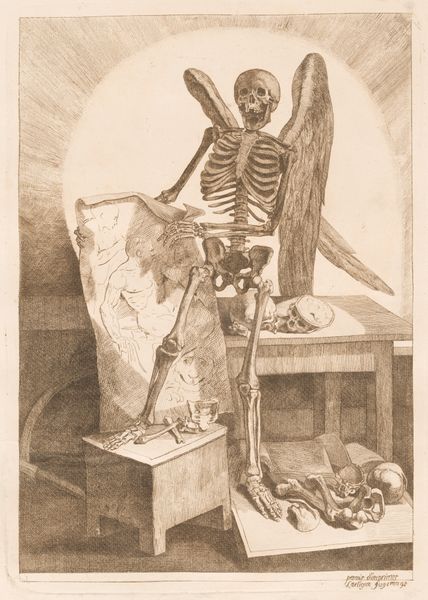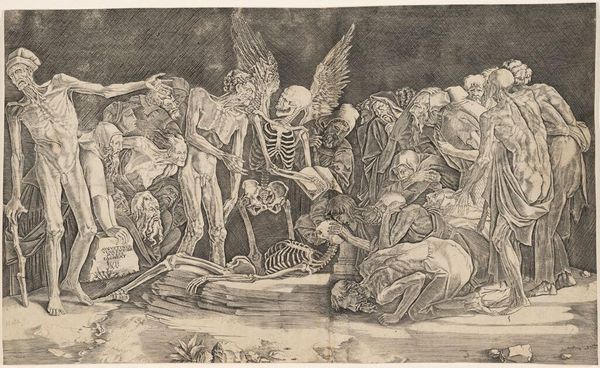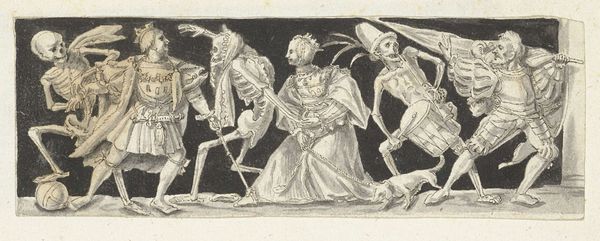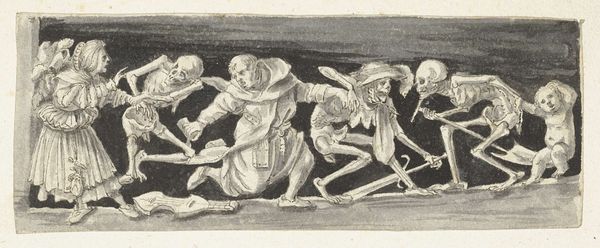
drawing, print
#
drawing
#
medieval
# print
#
figuration
#
form
#
momento-mori
#
line
#
history-painting
#
northern-renaissance
#
realism
Dimensions: Height: 6 7/16 in. (16.3 cm) Width: 8 13/16 in. (22.4 cm)
Copyright: Public Domain
Editor: This is “Memento Mori: a skeleton in a niche,” a print made between 1465 and 1495 by Master IAM of Zwolle, here at the Metropolitan Museum of Art. The image of the skeleton reclining in the niche is rather unsettling. How do you interpret this work? Curator: This print speaks volumes about the medieval relationship with mortality. It's not merely about death but about remembrance—memento mori, "remember you must die." Editor: Remember you must die... yes, quite a direct message! Curator: Exactly. Note the setting, a niche – a confined space that evokes tombs and final resting places. And observe the skeleton itself – it's not simply lying still, it’s actively posed, almost lounging. This juxtaposition of the macabre with a relaxed posture creates a powerful symbol, a visual tension that encourages contemplation. Do you notice anything symbolic? Editor: Well, I notice a ribbon, like a banner or a scroll, hovering around the figure. Is it significant? Curator: Indeed. It signifies time and decay, unfurling and then withering. This challenges the viewer to consider what they will leave behind, beyond mere physical existence. How do you think the prevalence of images like this affected people living at the time? Editor: I imagine that they were constantly reminded of their own mortality, which may have influenced their choices and priorities. Curator: Precisely. It's a visual culture steeped in symbols that permeated their lives, constantly reinforcing a spiritual framework. Death wasn’t feared in the modern sense but viewed as an integral part of life, a transition to the afterlife. This image invites conversation about both life and its conclusion. Editor: I now better understand the artist's choices. Thank you. Curator: And thank you. Reflecting on this piece again, I see that art provides a glimpse into cultural memory, continually re-evaluating our human concerns.
Comments
No comments
Be the first to comment and join the conversation on the ultimate creative platform.
